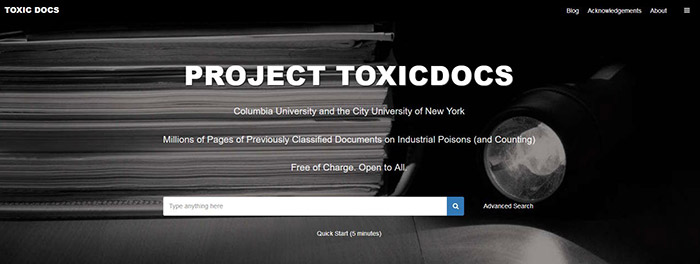
We’ve heard the stories about the toxic effects of industrial pollution on public health and the environment: lead paint poisoning; talcum powder linked to ovarian cancer; mesothelioma resulting from exposure to asbestos, and much more. But, even though documents about these issues were made public over time through lawsuits and the release of internal memos and scientific studies, it was nearly impossible to find all this data quickly and easily.
Now Professor Gerald Markowitz, Distinguished Professor of History at John Jay College of Criminal Justice, has co-founded a website that serves as a central archive, free and publicly accessible, for fast digital searches on these once-secret industry documents: ToxicDocs.org.
“We had always wanted to make these documents available to other scholars and the public, but didn’t know how to do that,” said Professor Markowitz who credits his colleagues at Columbia University Mailman School of Public Health, David Rosner and Merlin Chowkwanyun, who had the skills and imagination to develop ToxicDocs.org so these documents could be shared widely.
ToxicDocs is a free database and blog that houses and summarizes millions of previously classified documents on toxic substances. It began more than a decade ago but only went live online last year.

“The website came about because Professor Rosner and I had accumulated, over the past thirty years, literally millions of pages of previously private corporate documents,” said Professor Markowitz.
For Professor Markowitz, the goal of ToxicDocs is to effect social change: “We hope that students will find many areas for papers, and theses; that other scholars will be able to develop research projects from this extraordinary collection; that journalists will be able to have resources for their stories; that community activists will find evidence for their campaigns, and that many others will be able to use what were once private secret memos, letters, reports and meeting minutes, to make our democracy stronger and more secure.”
ToxicDocs received a $500,000 grant from the National Science Foundation as well as support from Amazon and the Robert Wood Johnson Foundation.



